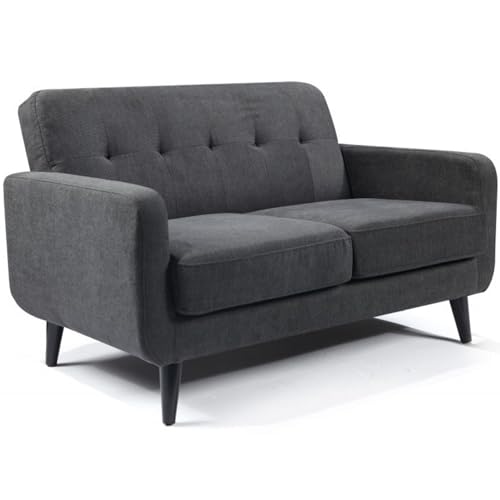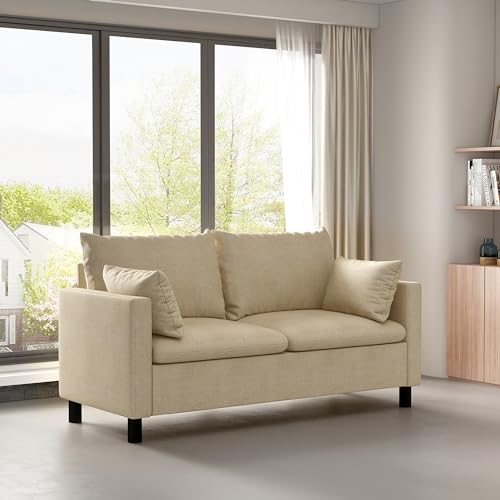Guide To 2 Seater Leather And Fabric Sofa: The Intermediate Guide The …
페이지 정보

Lettie
2025-03-03
-
39 회
-
0 건
본문
 Choosing Between a 2 seater fabric couch 2 seater fabric tub sofa leather and fabric sofa (go directly to Daoqiao)
Choosing Between a 2 seater fabric couch 2 seater fabric tub sofa leather and fabric sofa (go directly to Daoqiao)It isn't easy to decide between fabric and leather when you are searching for a new sofa. This is especially true if you don't have much furniture experience.
If you have kids or live in a smaller apartment the leather option might be the best choice for you. It is easy to clean and looks great in most homes.
Comfort
The sofa is usually the focal point in many homes and is a major purchase. You want one that is comfortable to sit on for hours and looks good, is in line with your room style and can endure the test of time. It can be difficult to decide between leather and fabric, however, you must take into consideration your budget, lifestyle, and priorities before making a choice.
Leather is a high-end material that has a luxurious feel and oozes elegance in the home. It is tough and stain-resistant, it is safe for pets and children, and will last for a long time when properly taken care of. It can be expensive initially and may require regular conditioning to avoid cracking or peeling.
Fabric sofas come in a huge variety of styles, colours and fabrics. They are an affordable alternative to leather sofas. They are also more comfortable and more cosy, and can be "broken into" right from the beginning. They may be more susceptible to dust mites and pet hairs and require more frequent cleaning. There are now hypoallergenic fabrics as well as new technology available.
Fabric sofas can last up to 15 years if they're properly maintained. Regular vacuuming and deep-cleaning will keep the fabric free of stains, odours and dirt. They also can be stretched and flatten in time, much like leather. A majority of couches made of fabric are treated with chemicals to make them stain-resistant and flame retardant. They can release volatile organic compounds that may alter indoor air quality and cause allergies.
Durability
When buying sofas, we typically choose fabrics that are incredibly robust, which is important for those with pets and children. You don't want to invest a lot upfront and be left with buyer's remorse after the first spill or crowbarred claws. In the same way you shouldn't purchase something that is cheap 2 seater fabric sofa but isn't durable enough for daily use.
Leather is also extremely tough, with incredible tear strength. It can last up to 4 times longer than fabric, and is naturally resistant to fading, cracking and flaking over time. It can be conditioned in order to restore its natural oils and make it appear new.
Fabrics are a more affordable alternative and are available in a variety of colors, patterns, and textures to match any interior design. They are also cleaner than leather and can withstand a fair amount of wear and tear, however, they can be more prone to moisture and can suffer from fading as time passes.
Microfiber is a great choice for durability and is available in a variety of colours, but it's not as durable as genuine leather and may not withstand scratches. It is still a great choice for families because of its ability to resist spills and stains. It's also easy to clean with an aqueous cloth.
Suede is more difficult to clean and repair than leather. It also can lose its shape if it is not regularly conditioned and can feel quite rough to the roughness of the. It is also a thin product, so it might not be as tough as sheepskin or cowhide.
Allergens
The material the sofa is constructed of can have a significant impact on your allergies, so it's important to understand the different ways to treat. Fabrics are prone to retaining allergens like dust mites and pet dander, which can trigger symptoms like asthma, hay fever, eczema and rhinitis. These fabrics are perfect for their health.
Leather is, however, is not prone to accumulating allergens and can offer consistent comfort no matter what season it is. It can also cause skin irritation in those who suffer from contact dermatitis or are sensitive to chemicals used in tanning. Using vegetable-tanned leather and maintaining regular skincare routines is essential to reduce skin reactions.
Sofas made of fabric and leather have a high level of durability, however the material you choose will determine the degree to which it can last over time. A top-quality fabric will not suffer from fading or sagging and can withstand spills or body oils as well as daily use. Modern fabric couches are often equipped with stain-resistant treatment to make cleaning simpler.
Although you may not be able to completely stop an allergic reaction from the leather on your sofa, it can help to avoid allergens by keeping a lint roller nearby and regularly vacuuming your living space. This will reduce the amount dirt, pet hair and dust mites you find on your sofa. If you are still experiencing issues with allergies, you should consider swapping your sofa with a hypoallergenic version. For instance, a sofa made from synthetic or vinyl is less likely to collect dust mites and pet dander, and will help you breathe easier.
Scratches
When buying a leather sofa, you need to consider how much fabric for 2 seater sofa much wear and tear you can expect from it. The length of time a sofa will last is contingent on the finish, color and the quality of the leather. You must also ensure it is durable to withstand spills and other accidents. This can be done by selecting a couch with a solid wood frame and [Redirect-302] high density foam cushions.
Leather can be scratched by many different reasons, including stretching it, marking territory or the reliving of tension. Scratches can vary in severity in severity, ranging from minor [Redirect Only] surface scratches to deep cuts and punctures. Minor scratches can be repaired by applying a leather conditioner to the area affected. This will help restore the equilibrium of moisture and oil in the leather, which will prevent drying out and cracking. Cuts and scratches that are deep might require a different treatment, depending on the amount of damage.
If you have pets, it's recommended to trim their nails regularly as this can help to prevent them from scratching your sofa. You can also redirect your cat's scratching behavior by providing them with alternatives scratching surfaces, like sisal rope or cardboard. You can also apply a pet-safe furniture polish that you can apply with the help of a soft, clean cloth.
In addition to cleaning your leather couch regularly, it is also recommended to keep it away from the direct sun and other sources of heat, as this can dry out the leather. This could cause cracks in the leather. Repairing this can be difficult and requires an overhaul. It is also a good idea to use a conditioner for leather to keep the leather soft.
Smell
A leather sofa is likely to have a slightly different smell than fabric. It's because leather is porous, and will absorb odors like body odors, smoke or food. The good thing is that odors usually dissipate over time, especially if you make use of a fragrance-free, non-toxic and free cleaner.
However, if the smell is very overpowering it could mean there's something wrong with the foam. This is usually caused by the chemical off-gassing of polyurethane based on petroleum. If this is a concern, look for couches manufactured with CertiPUR US certified or natural latex.
Another method to determine faux leather is to look for bumps or texture on the back of a sofa. This is a sure sign that it's bonded, not genuine top grain leather. You can also do a visual check by laying the sofa over and observing any visible upholstery backing. If you can smell it, it's probably a synthetic substance, such as polyurethane or polyester. These materials will have a different scent than leather.
 A leather sofa is more prone to picking up smells, the best way to avoid this is by regularly cleaning your sofa. This will keep it looking its best and fresh and also prevent it from becoming stiff or cracking in time. Start by vacuuming and dusting your couch, then wiping it down with a dry cloth and baking soda (a good natural way to remove smells). It is recommended to do this at least once every small two seater fabric sofa weeks or more in order to get rid of any dirt and dust build up. Then, apply a leather conditioner to preserve the color and texture.
A leather sofa is more prone to picking up smells, the best way to avoid this is by regularly cleaning your sofa. This will keep it looking its best and fresh and also prevent it from becoming stiff or cracking in time. Start by vacuuming and dusting your couch, then wiping it down with a dry cloth and baking soda (a good natural way to remove smells). It is recommended to do this at least once every small two seater fabric sofa weeks or more in order to get rid of any dirt and dust build up. Then, apply a leather conditioner to preserve the color and texture.